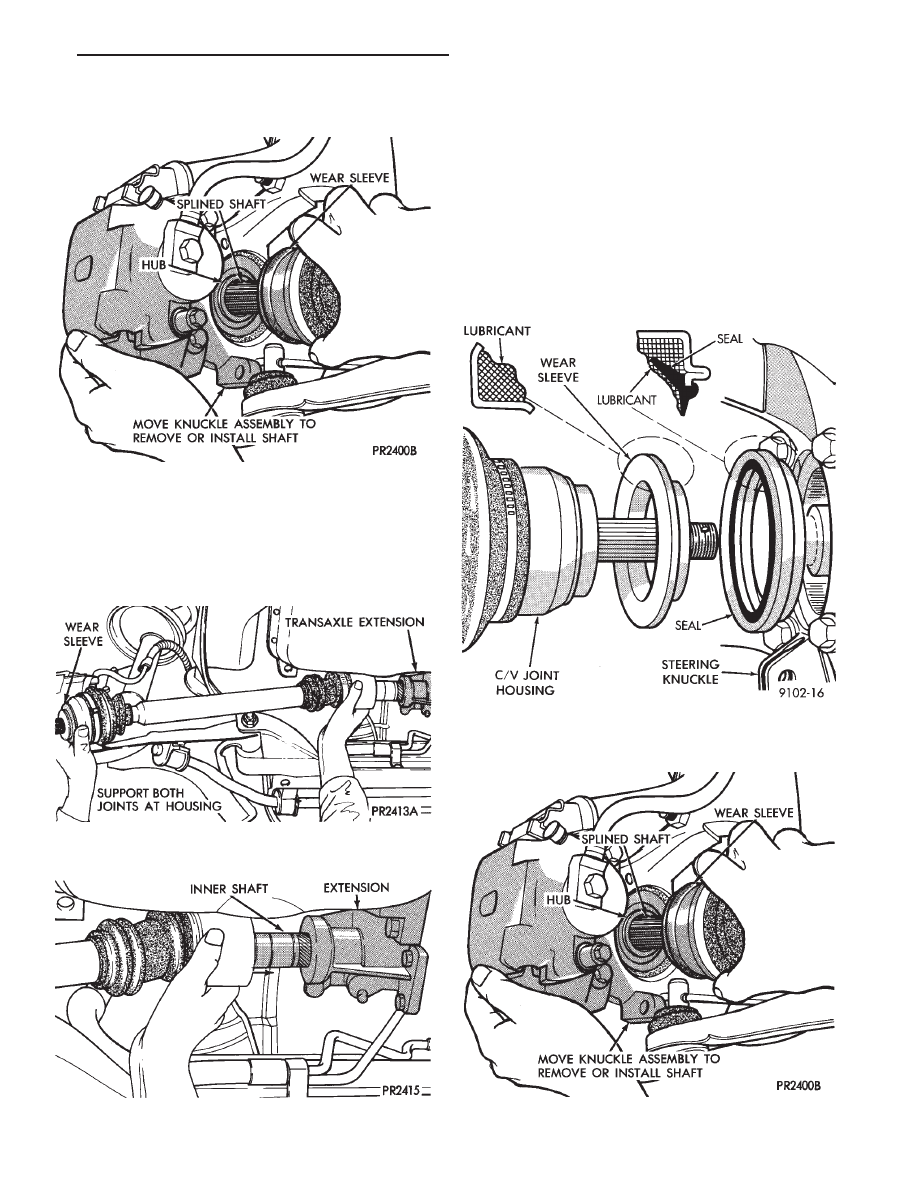Chrysler Town & Country/Voyager, Dodge Caravan, Plymouth Voyager. Manual - part 58

Install a bolt through the hub to ensure that the hub
bearing assembly cannot loosen.
INSTALL
(1) Hold inner joint assembly at housing (Figs. 8 and
9) while aligning and guiding the inner joint spline into
the transaxle or intermediate shaft assembly.
CAUTION: Follow this Seal/Wear sleeve lubrication
during any service procedures where knuckle and
driveshaft are separated. Thoroughly clean seal and
wear sleeve with suitable solvent (solvent must not
touch boot) and lubricate both components prior to
installing driveshaft. Lubricate wear sleeve and seal
with Mopar
T
Multi-Purpose Lubricant, or equivalent.
Apply on the full circumference of the Wear Sleeve a bead
of lubricant that is 6 mm (1/4 in.) wide to seal contact area
(Fig. 10). Fill lip to housing cavity on Seal, complete circum-
ference, and wet seal lip with lubricant (Fig. 10).
(2) Push knuckle (hub) assembly out and install
splined outer C/V joint shaft in hub (Fig. 11).
Fig. 7 Separate Outer C/V Joint Shaft from Hub
Fig. 8 Removing Driveshaft Assembly Unequal
Length
Fig. 9 Installing Inner Shaft into Transaxle
Fig. 10 Seal & Wear Sleeve Lubrication
Fig. 11 Install Outer Shaft into Hub
.
FRONT SUSPENSION AND DRIVE SHAFTS
2 - 29